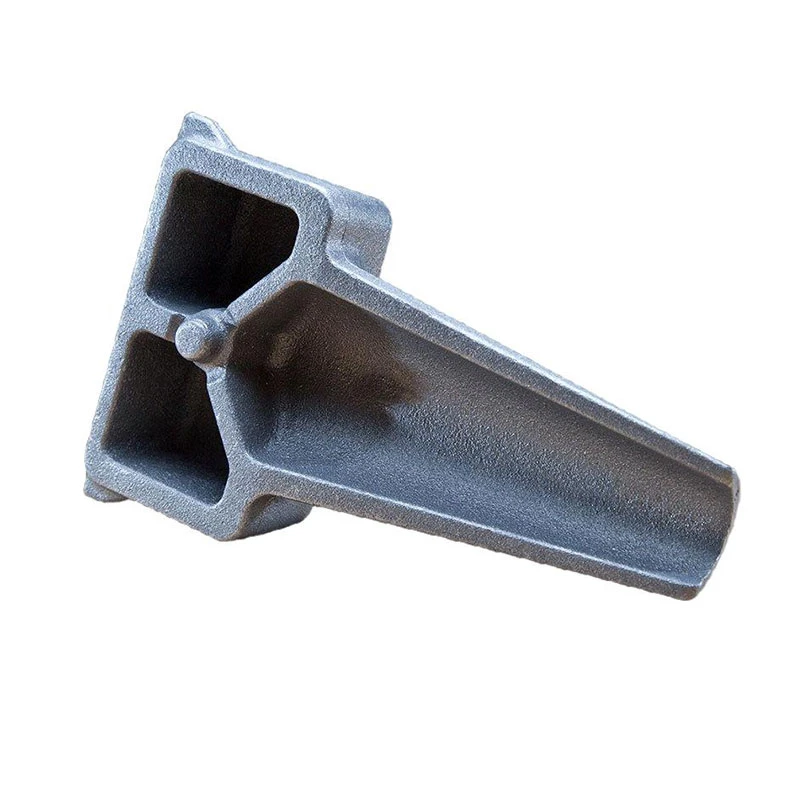gravity sand casting
Gravity Sand Casting An Overview of the Process and Benefits
Gravity sand casting is a widely used metal casting process that involves pouring molten metal into a mold made from sand. This method is renowned for its versatility and cost-effectiveness, making it a favorite among manufacturers in various industries, including automotive, aerospace, and artistic creations. In this article, we will explore the fundamental aspects of gravity sand casting, its advantages, and its applications.
The Process of Gravity Sand Casting
The gravity sand casting process begins with the creation of a mold. Molds are typically made of a mixture of sand, clay, and water, which provides the necessary binding properties. The first step is to create a pattern, which is an exact replica of the final product to be cast. The pattern is often made from metal, wood, or plastic.
Once the pattern is prepared, it is placed in a sand mixture and packed tightly around it to form the mold. The pattern is then removed, leaving a cavity in the shape of the desired part. This process can be done either in a single-part mold for simple shapes or in a multi-part mold for more complex designs.
Next, the mold is assembled, and molten metal is carefully poured into the cavity. The force of gravity plays a crucial role during this stage, as the molten metal flows into every crevice of the mold, ensuring that it takes on the intended shape. After pouring, the metal is allowed to cool and solidify, which typically takes a few hours, depending on the thickness and size of the casting.
Once cooling is complete, the mold is broken apart, and the casting is removed. Finally, any necessary finishing processes, such as grinding, machining, or polishing, are performed to achieve the required surface finish and dimensional accuracy.
Advantages of Gravity Sand Casting
Gravity sand casting offers several advantages that make it an attractive option for manufacturers
1. Cost-Effectiveness Compared to other casting methods, gravity sand casting is relatively inexpensive. The materials used, such as sand, are readily available and low-cost. Additionally, the process requires fewer specialized tools and equipment, resulting in lower production costs.
gravity sand casting

2. Versatility This method can be employed to create a wide variety of shapes and sizes, from small components to large engine blocks. Its versatility makes it suitable for different industries and applications.
3. Good Surface Finish Gravity sand casting can produce castings with a smooth surface finish, especially when fine sand is used in the mold. This minimizes the need for extensive post-processing work.
4. High Tolerance Levels With precise control over the pouring process and mold design, gravity sand casting can achieve high levels of tolerance, which is essential for parts that require exact specifications.
5. Recyclable Material The sand used in the casting process can be recycled and reused multiple times, making it an environmentally friendly option. This not only reduces waste but also lowers operational costs.
Applications of Gravity Sand Casting
Gravity sand casting is used in various applications across multiple industries. Some notable uses include
- Automotive Parts Many critical components, such as engine blocks, transmission cases, and brackets, are produced using this method due to its ability to deliver high strength and durability.
- Aerospace Components Lightweight and high-strength parts are essential in aerospace applications, making gravity sand casting a suitable method for producing components such as brackets and housings.
- Artistic Sculptures Artists and sculptors often use gravity sand casting to create intricate sculptures and art pieces, taking advantage of the creative potential of the process.
In conclusion, gravity sand casting is a significant method in the manufacturing industry, offering numerous benefits such as cost efficiency, versatility, and the ability to produce high-quality castings. As technology advances, the potential for this casting technique continues to expand, solidifying its place in modern manufacturing processes.
-
OEM Sand Cast Pump Valve Fittings - Baoding Hairun | Precision Engineering, CustomizableNewsJul.30,2025
-
OEM Sand Cast Pump Valve Fittings - Baoding Hairun Machinery And Equipment Trading Co., Ltd.NewsJul.30,2025
-
OEM Sand Cast Pump Valve Fittings - Baoding Hairun Machinery And Equipment Trading Co., Ltd.NewsJul.30,2025
-
OEM Sand Cast Pump Valve Fittings - Baoding Hairun Machinery|Precision Engineering&Fluid ControlNewsJul.30,2025
-
OEM Sand Cast Pump Valve Fittings - Baoding Hairun Machinery And Equipment Trading Co., Ltd.NewsJul.30,2025
-
OEM Sand Cast Pump Valve Fittings-Baoding Hairun Machinery And Equipment Trading Co., Ltd.NewsJul.30,2025















